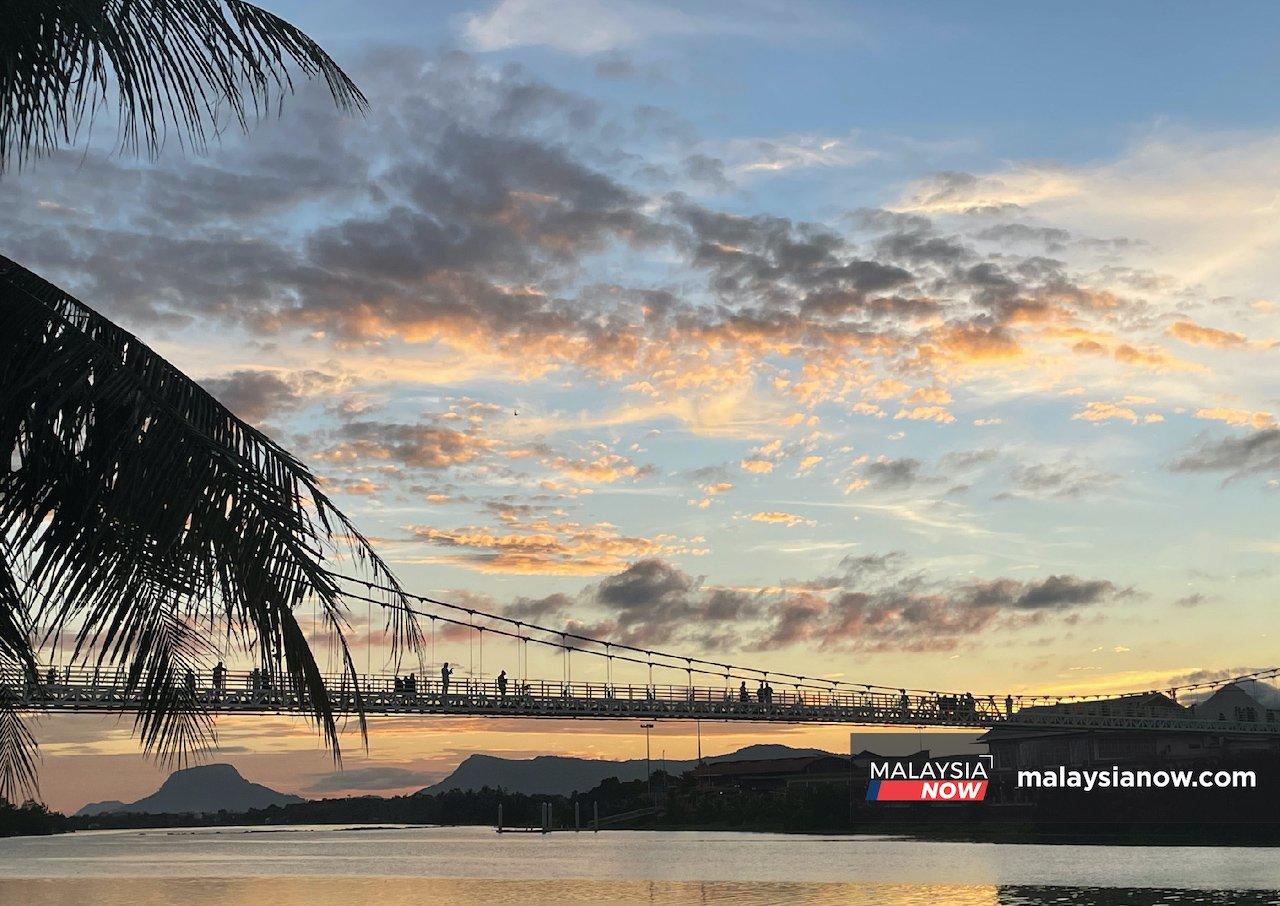Sarawak’s bridge through time
The Satok Suspension Bridge, once a vital link between towns, has taken on new life as a tourist attraction and de-stress spot for pandemic-weary visitors.
Just In
Ninety-five years ago, the Satok Suspension Bridge in Sarawak played a vital role in the lives of nearby communities.
Built during the time of Charles Brooke, it sagged precariously some 18m over the Sarawak River, providing a vital link between the hustle and bustle of Kuching and the sleepy town of Matang in PetraJaya.
Given that some 65% of Sarawak’s population live in lowlands along the winding river, such bridges were key to social economy.
The Satok bridge in particular was a catalyst for development among communities on either end.
But at 79, Bujang Dollah’s memories of the bridge revolve around more sentimental matters.
Sixty years ago, the bridge was the go-to meet-up point for him and his best friends, Dollah Umar and Mohd Razak.
The trio would meet at the bridge every day before walking to school together. Razak, who lived near the Satok area, would wait for Bujang and Umar who had to cross over from the other side.

“To get to the town at that time, you had to cross the bridge to the other side of the Sarawak River, then travel along a gravel road, turning some sharp bends before reaching your destination,” he told MalaysiaNow.
The entire trip would involve navigating some 10 miles of rough road.
“I still remember, in the 1950s, some of those who took the bus – which looked more like a tram – would have to get off and walk behind the bus when crossing the bridge,” Bujang said.
“It could only take six passengers at a time.”
In 1992, the suspension bridge was closed due to severe issues with its structure.
Unable to withstand the strong winds, it finally collapse on Oct 7, 2004, 75 years after its construction.
New bridge
Now, 17 years later, residents in the surrounding area still feel a sense of nostalgia over the loss of the old bridge.
It was rebuilt in a project announced by Sarawak Chief Minister Abang Johari Openg during his time as state tourism minister in 2017.
Today, it is a towering structure of steel and cables, a symbol of modernity and of how far Sarawak has come in terms of development and infrastructure.
It has also become a tourist attraction of sorts, drawing visitors from near and far who go to the bridge to cycle, take pictures or simply enjoy the view.
Even the high number of Covid-19 cases in the state was not enough to discourage a group of visitors who came on Thursday to watch the sun set.

“When I look at the view, it’s a reminder for me to calm down, to be more present and to relax,” said Magchrina, a 30-year-old Kenyah woman from Lawas.
“The pandemic has really locked us out from social activity.”
Juliet Ono Junaidi from Sibu meanwhile was there for a different reason.
Dressed in a full Melanau traditional outfit, she said she had come to the bridge with her son to take pictures for the Melanau association.
“But many people started asking to take photos with us,” she said. “I didn’t expect this!”
She, too, said the peaceful scenery at the bridge had healed some of her stress.
“We have been staying in the house for too long,” she said. “I miss our normal days.”
As for old friends Bujang and Dollah, they are still waiting for a chance to visit the new bridge.
“We are looking forward to it because the bridge looks beautiful, very sophisticated,” Bujang said.
“I hear many have already visited it. I just feel a bit frustrated because we are not encouraged to go out right now.
“But I hope to visit there one day. It holds so many stories and memories, especially for old folk like us.”
Subscribe to our newsletter
To be updated with all the latest news and analyses daily.
